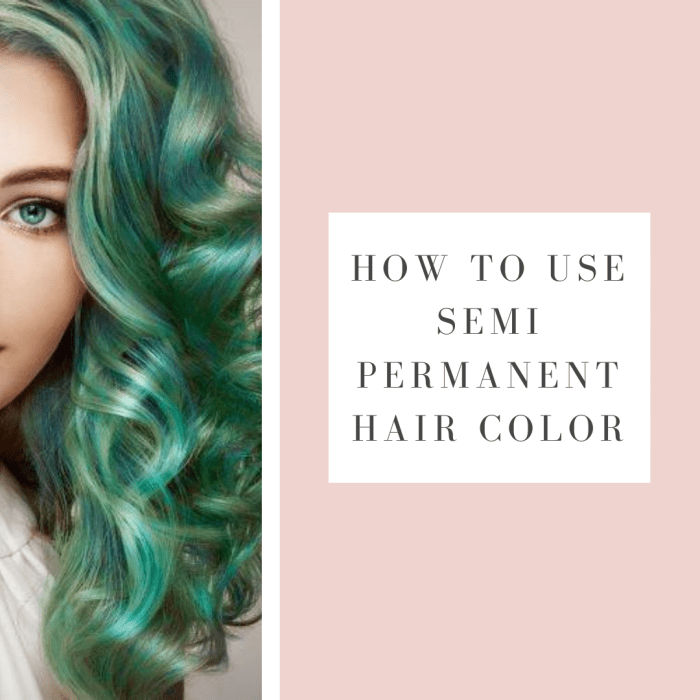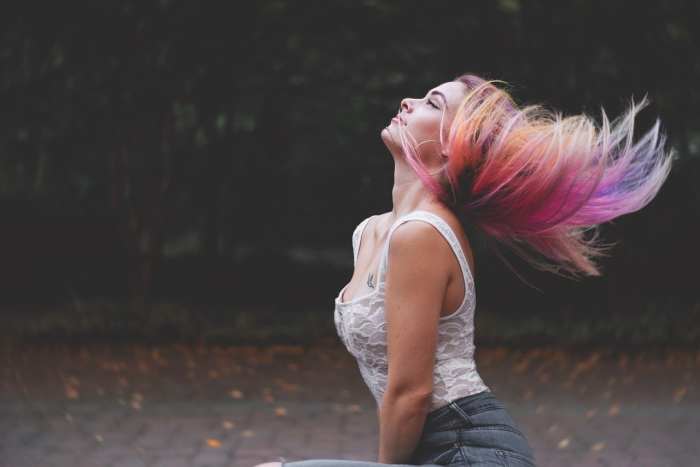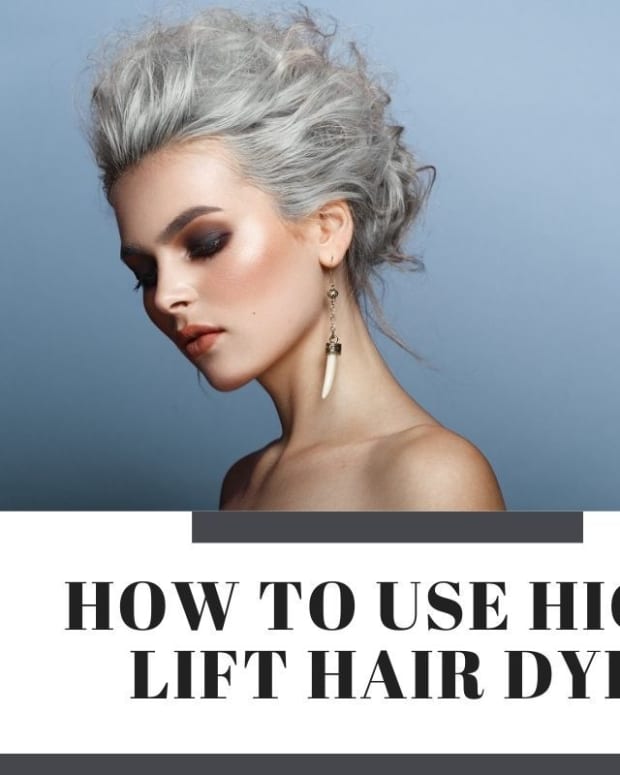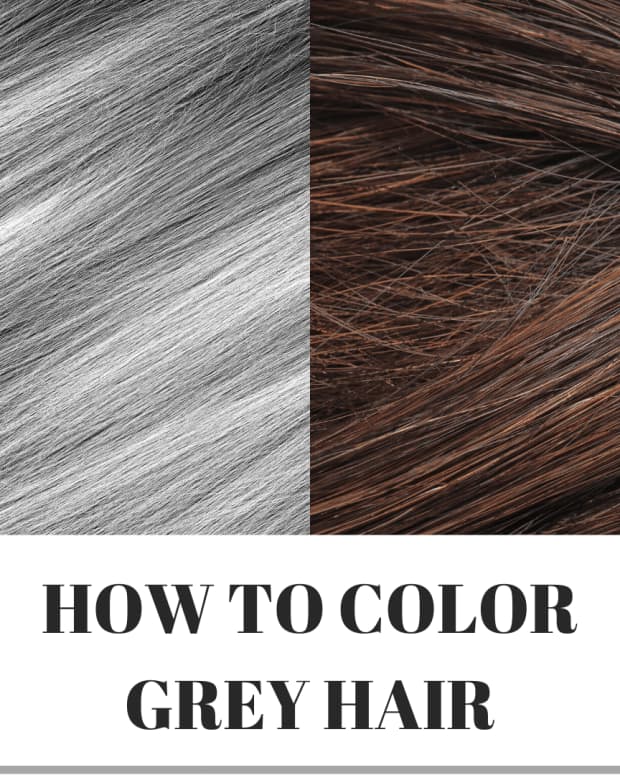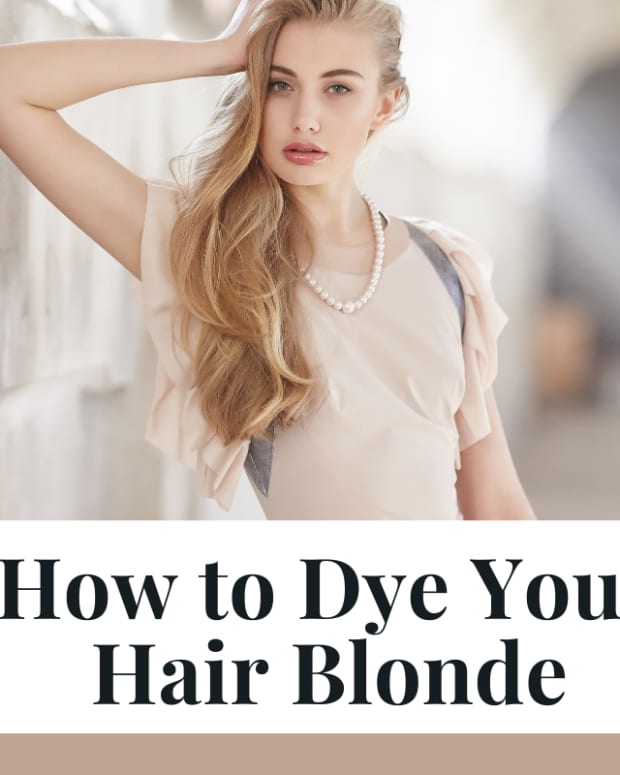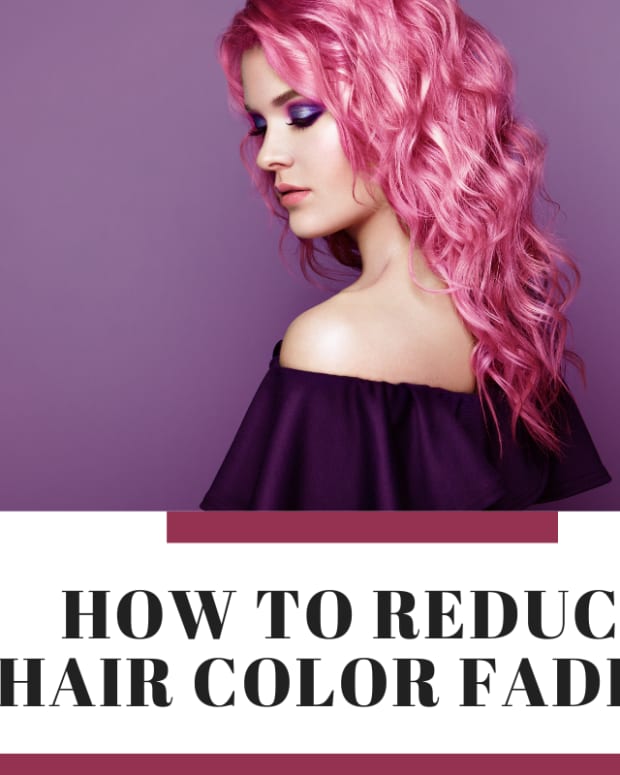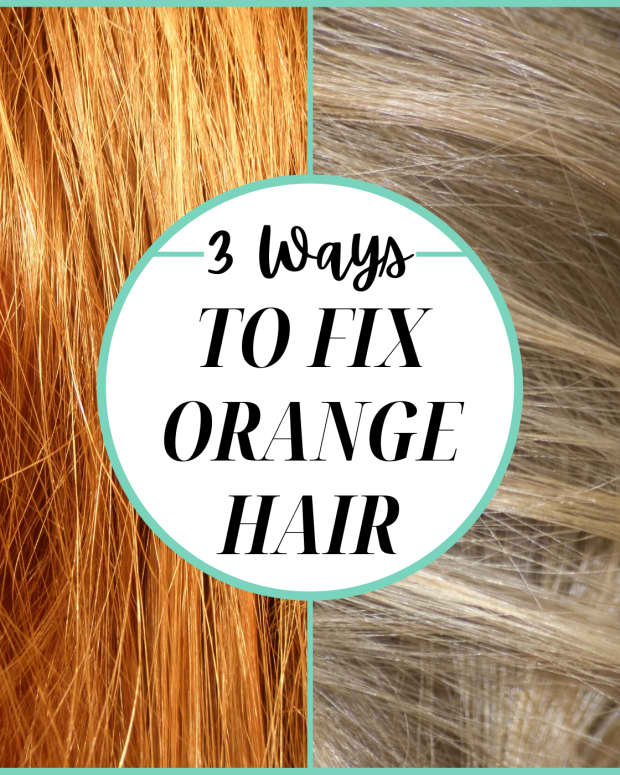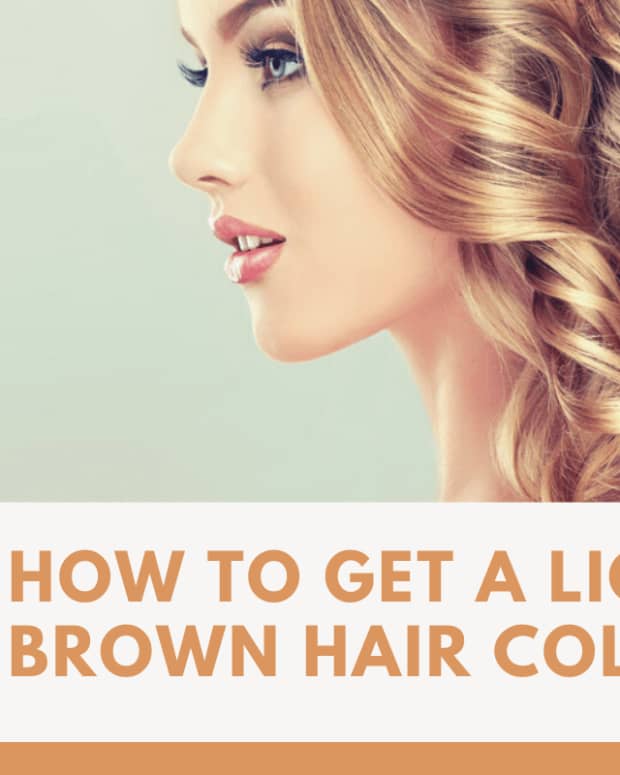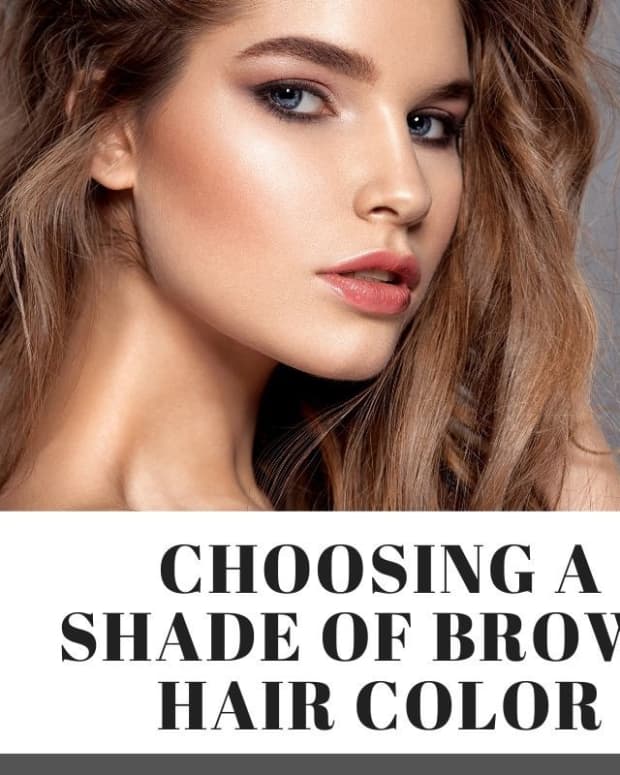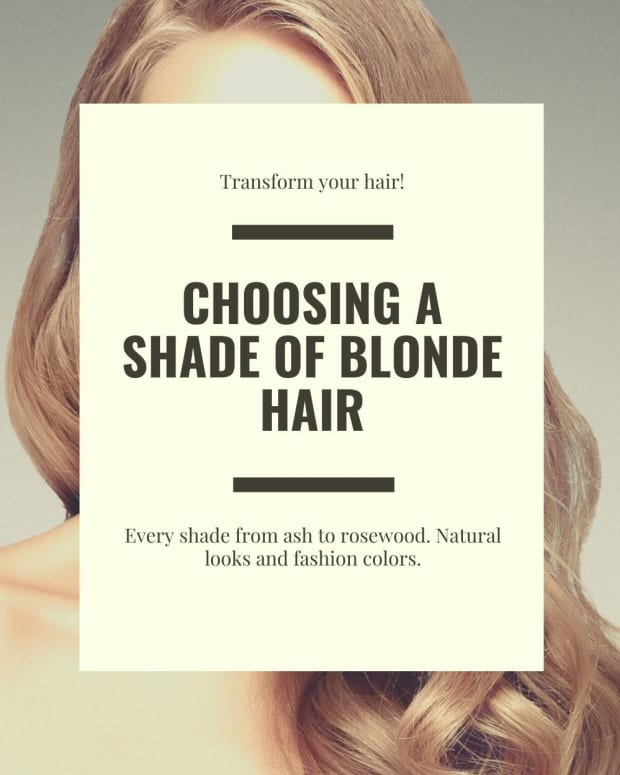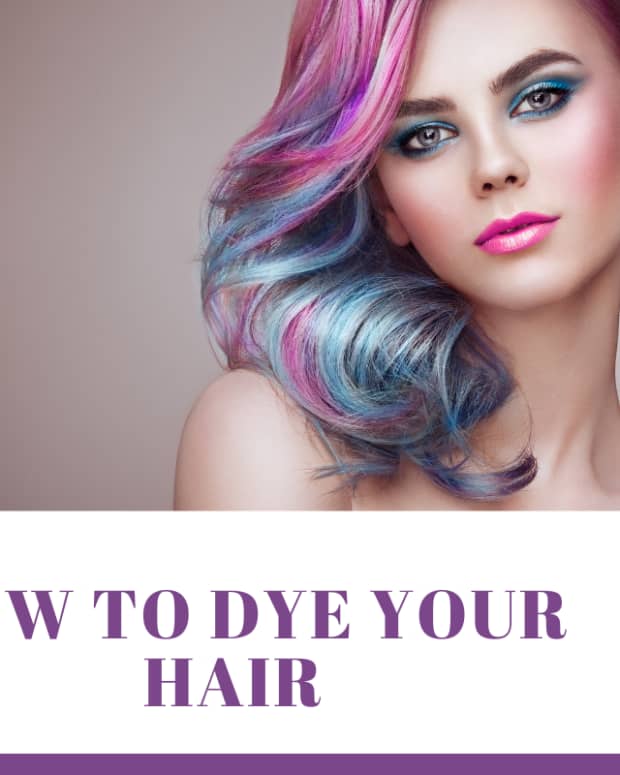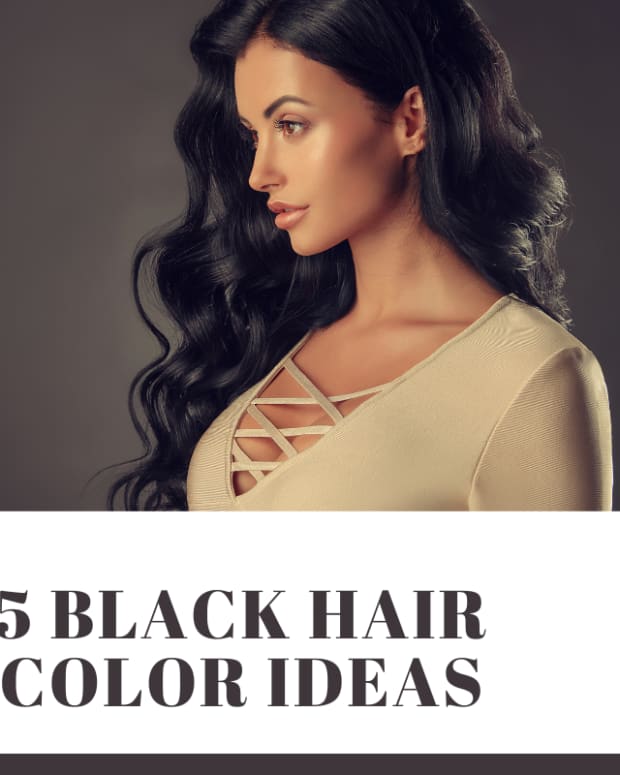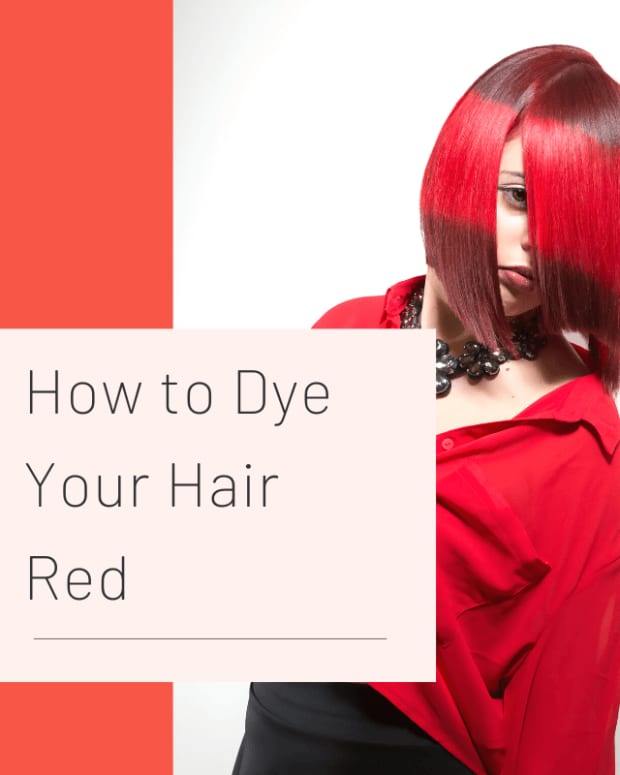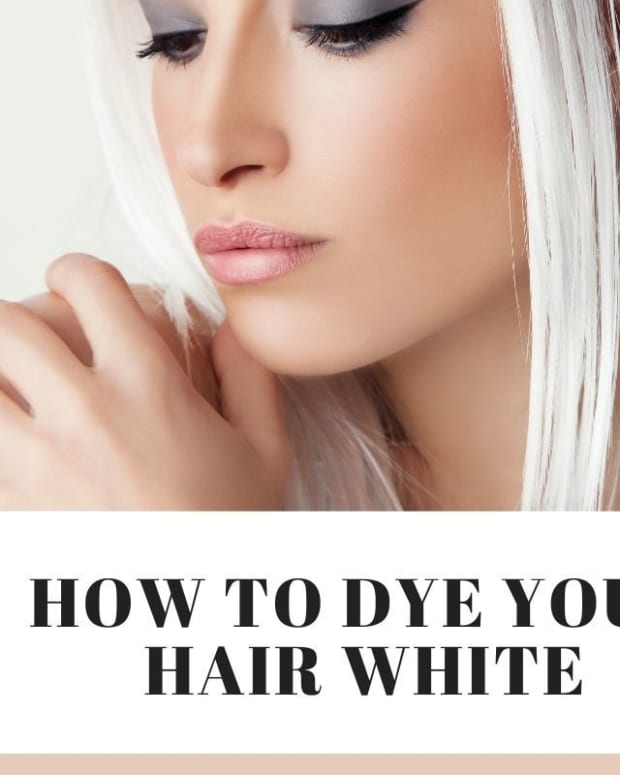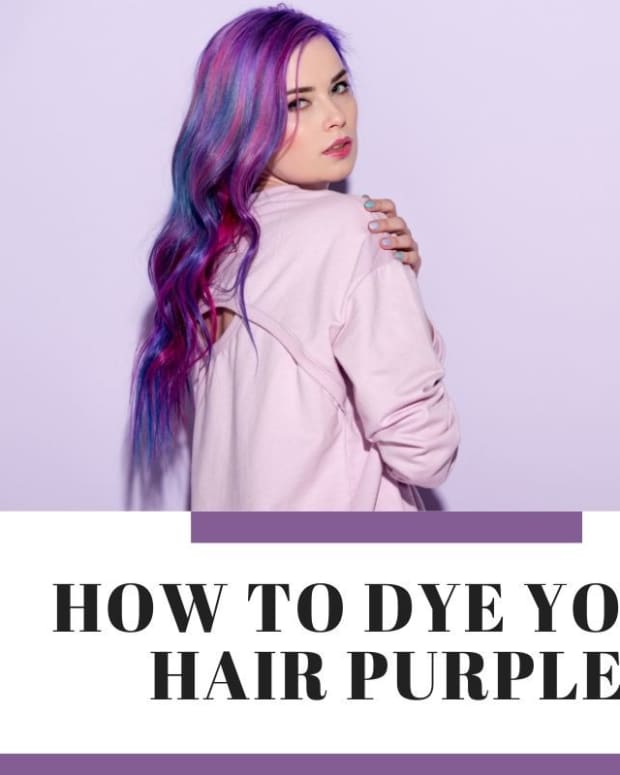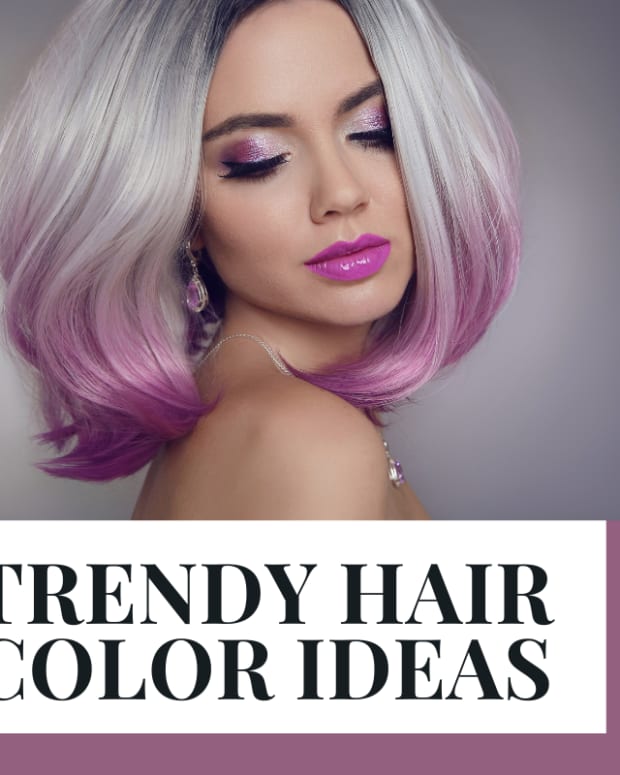How to Use Semi-Permanent Hair Color
I offer professional advice and knowledge about all things hair dye. Discover the terminology, chemistry, and processes behind dyeing hair.
Hair dye allows you to change your look in so many ways, but if you don't want a lasting change or simply want to experiment a little with a new shade, a semi-permanent dye is one of the most versatile and useful products for the task.
What Is Semi-Permanent Dye?
Semi-permanent dyes are a form of temporary hair color that gradually washes out of the hair. Not only can these dyes be used to color the hair without having to commit to the result, but there is also no potential for damage with the use of products like this because they don't contain ingredients like peroxide or ammonia that harm the structure of the hair shaft.
Products that are semi-permanent come in many forms such as mousses or gels, and a huge variety of shades—both natural and also brighter colors like blue or purple. It is for this reason and the lack of damage that they are particularly useful. Some of the most common types of semi-permanent dyes include:
- Rinses
- Gels and creams
- Mousses
- Sprays
Rinses and sprays are typically very mild dyes that only apply a small amount of color to the hair, making them most effective for toning hair or creating minor changes to how your hair looks. They also wash out quicker than the other common products.
Mousses tend to have more pigment and last longer so they're useful for making more noticeable changes to hair but they are also often used as toners. Gel or cream products are the thickest and most pigmented variants. They are designed to cling to the hair and deposit more color. These dyes are used for anything from toning to achieving much darker color transitions, or intense unnatural shades like green or pink.
No matter what kind of dye you choose to use though, there is one thing you need to remember that applies to all these dyes: semi-permanent dye can't lighten hair. This means that you can only achieve tone-on-tone or darker results with their use. If you need to lighten your hair, this isn't the right product for it.
Uses
Whilst the most obvious use of semi-permanent hair color is to simply dye the hair temporarily, this isn't all they can do. Some considerations for the use of products like this include:
- Dyeing hair temporarily
- Toning hair
- Refreshing faded hair colors
- Brightening or retouching colors that have turned out too dull
How Long Does Semi-Permanent Hair Color Last?
In a perfect scenario, the color generally lasts for about 16–24 washes depending on the product used. However, this estimate of longevity is based on hair that is in good condition, has intact cuticles, and isn't styled with heated tools too frequently.
As with any type of hair color, there are factors within your control that can either extend or shorten the duration of the dye. There are also things that may be out of your control, like cuticle damage from previous chemical treatments. The most crucial conditions determining how long the color will last include:
- Hair condition
- Porosity
- How frequently you shampoo your hair
- Use of heated styling tools
- Use of hair care products
Hair Condition and Porosity
The condition of your hair has a direct effect on how long the dye remains vibrant. A little damage to the cuticles that line the outermost part of the hair shaft helps the dye stick because of the increased surface area as this kind of dye actually functions as a stain.
Conversely, too much damage has the opposite effect because the cuticle layer ends up largely destroyed and missing in badly damaged hair. Hair that is in good condition—or only very slightly damaged—will hold onto the dye longer.
Shampoo Frequency
As semi-permanent dye is a stain on the surface of the hair, shampoo will gradually emulsify it away each time you wash your hair, and this will be the main way that the color fades out over time. This also means that how often you shampoo your hair has the greatest effect on how long the color will last, and this is one of the factors that is also most in your control.
Shampoos vary in how strongly they clean hair with products like clarifying, chelating, or anti-dandruff shampoos being the harshest. These products strip all the natural oils out of the hair as well as anything else like debris, styling products, and hair dye. Shampoos designed for dry hair, most colored hair shampoos, and moisturizing shampoos are all much milder and will wash out less color.
Apart from the type of shampoo you use, the frequency that you wash your hair is also one of the most important factors in making your hair color last longer. It is ideal to only wash your hair as often as is necessary to keep it clean if you want to maintain the color for as long as possible.
Read More From Bellatory
Heated Styling Tools
Another factor affecting the duration of your color is any use of heated styling tools. This is of much less impact than shampoo use and the condition of your hair, but it's still relevant to know as using straighteners or curling irons will reduce how long your color lasts because the heat of these tools tends to break down the stain adhesion of the dye, amplifying the effect of shampooing.
Temperature protection products like serums and sprays can help to mitigate this (as well as reduce potential damage from styling too).
Use of Hair Care Products
The last major factor in how long your color will last is the type of hair care products that you use. Products like leave-in conditioners and hair serums tend to help any hair color last longer because they help keep the hair hydrated. Serums in particular will even help reduce the harmful effect of high humidity if that's a problem where you live.
Application
The application process for these types of dyes is one of the product's many strengths as it is much easier to apply these types of dyes than it is to apply a permanent or demi-permanent dye. However, as dye comes in a few different forms it can be a little confusing because there's no single application method that fits every product.
Practically every semi-permanent dye should be applied after shampooing your hair though, and this is one common step to almost every product. This means before applying your dye you will need to wash your hair and how you proceed from there then depends on the style of product being used.
Rinses
Rinses should be applied after washing your hair but you don't need to leave the shower because they only sit in the hair for a few minutes. Simply squirt the product through damp hair and massage through from roots out to the ends of your hair, then leave it a few minutes before rinsing. As the product is conditioning it replaces the need for a conditioner but you can use one if you have very dry hair and need the extra moisturization.
Mousses
Semi-permanent mousses are applied similarly to a rinse except the product is thicker and gets left to process in the hair for a longer period. For this reason, you might prefer to turn off the shower and sit down somewhere if possible while you wait, otherwise, the same directions apply: shampoo your hair, apply the mousse, process it for the time directed, and then rinse. Follow up with conditioner only if you need the extra conditioning.
Gels and Creams
Gels and creams are usually also applied to damp hair, but these will have a more traditional processing time where you will need to leave them in the hair for 20 minutes or more depending on the individual product so you'll need to have time available to use these dyes.
Start by giving your hair a good shampoo, then towel dry your hair so it isn't dripping wet. As these kinds of dyes are heavily pigmented, you want your hair to be a little damp but not so much that the product can drip everywhere and stain skin, clothes, or furniture.
How you actually apply the product is ultimately up to you. You can apply it meticulously and systematically with a tinting bowl and brush, or just mix it through your hair by hand (wearing gloves of course with either method to avoid staining your hands). As long as the product is applied evenly and you don't miss any spots it will turn out the same way no matter how it's applied as there is no developer in the dye that could lead to patchiness due to slow application or heat banding.
Ideally, leave the product in for the minimum time the manufacturer recommends, but it's not harmful to your hair to leave it in longer than this. In fact, the longer you leave a semi-permanent dye in your hair, the more likely it will be more resistant to fading quickly. As the product is essentially a pigmented conditioner, it is also unnecessary to use a conditioner after rinsing it out, and you shouldn't shampoo it out of your hair either, simply rinse with cool or warm water and then dry as usual.
Sprays
Spray-based semi-permanent dyes are uncommon, and the only specific thing to note is that you'll want to apply these in the same way as a rinse in the shower as the product can be messy. Otherwise, these are essentially the same as a rinse but instead of squirting it through the hair, you will spray it on the hair and then massage it through.
Shade Mixing
In the same way that permanent dyes are designed to be inter-mixable within the same brand and product line, this is also true of a lot of semi-permanent dyes. This is mostly the case for gel or cream products though as even if you can technically mix other kinds of products, it's generally not so feasible to try to mix a rinse or mousse.
As for why you would want to mix different shades of dye to begin with, this really just boils down to creating your perfect shade or taking a spartan approach to making a particular shade you don't currently have but need immediately. It's very common for people to mix outlandish colors like blue, red, or yellow to really individualize what is already likely a fun shade and achieve the exact look they envision.
When mixing these dyes, the major thing to note is that you should only do this within the same brand and product line where possible. Whilst it isn't harmful to mix different brands because there are no chemicals in the dye that could react, the product isn't tested to ensure it works properly if used like this so you do take a minor risk of it not lasting as long.
If you're mixing dyes that are natural colors, these will have a level which is how dark the shade is, and one or more tones that comprise the exact look of the shade. This is all the information you need to be able to mix these shades. Mixing unnatural shades is mostly just a visual affair, on the other hand, standard color rules apply but it's more of a guess how mixing a certain amount of a much darker dye into a lighter dye affects the mixed color result for example.
Color Depth
Professional dye brands are typically designed in a way that if you mix shades of different levels, you already have a good idea of what level the result will be. For example, if you mix a dark ash blonde and a light ash blonde, the result will be a medium ash blonde usually. If in doubt, check the manufacturer's recommendations and information.
Tone
Tone is the primary and/or secondary colors present in a dye that dominate the appearance of the shade. As with the level, mixing dyes of different tones can give you something in between both, like a neutral blonde and ash blonde being mixed to give something that is more ashy than the neutral, but less than the full ash.
Unlike depth, however, not every shade will respond like this to mixing. If you were to mix a red and golden shade, for example, you get something coppery as a result because red and yellow create orange. This is the same scenario you'll find yourself in if you mix unnatural shades of semi-permanent hair color like blue, red, and yellow incidentally and the easiest way to get to know what you're doing if you struggle with color theory is to use a color wheel like the one below.
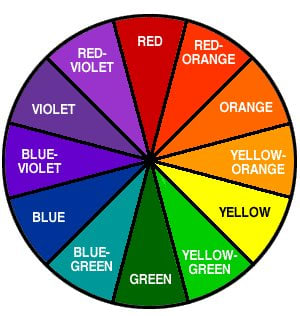
Colors directly opposite each other on the color wheel neutralize each other, whilst colors next to each other mix to form new colors.
Toning Hair With Semi-Permanent Dye
One of the best uses of semi-permanent hair color is toning hair. This could be anything from neutralizing red tones in brown hair or keeping pearl blonde hair from showing yellow tones and the versatility is close to the same as that of permanent dye but without the damage.
Toning, as a process, follows the same principles as mixing shades in that you can use the color wheel to get the right idea about what you need to do. For example, if you wanted to tone hair that is a brassy, yellowish-orange color you can already tell you need to add a violet-blue tone into the hair to counteract this. You also need to use a dye that's the right depth though and this is mostly a visual estimate made by looking at the hair so it's something that takes practice.
Knowing all that information, as long as you can roughly guess how dark your hair is, using a semi-permanent dye containing the required tone at one level lighter than your hair is a very easy and effective way to tone out any unwanted color. This can work on hair that is very pale or very dark and it will still function the same as long as you get the dye selection right by using color theory and your eyesight.
To tone hair, you'll generally want to use either a mousse or cream product. However, this will simply be rinsed out once your hair is adequately toned rather than left for a longer period. As before, there's no problem with leaving the product in longer but it can potentially over-process like any toner and this will result in too much toning.
The effect of this depends on what color you were toning with but overly ashy or purple tones in blonde hair are a common result, whereas brown hair could turn out mousey or even get a very slight muddy-green tinge to it. In any case, this will wash out with a shampoo or two if you do make a mistake so it's not necessarily a problem but it is an inconvenience.
Refreshing or Retouching Permanent Dye
An often overlooked use of semi-permanent hair color is refreshing and retouching other dye-jobs. Not only can a semi-permanent dye refresh a color that has faded and become dull, but it can also be used to alter the color you already have. As an example, if you had red hair you could make it mahogany or burgundy with a semi-permanent dye that would last several washes.
Uses like these can help save on potential damage to your hair too as refreshing the look of your hair color too often with permanent dye increases the risk of damage and subsequent problems like frizz and breakages. Semi-permanent dyes don't cause these issues so you can use them between permanent processes to maintain healthier hair.
Caring for Dyed Hair
If you've dyed your hair with semi-permanent hair color, it's important also to know how to care for it and this is something that will make it last a lot longer, saving you time and money. Some of the easiest ways to care for your new hair color include:
- Washing it less frequently where possible and with a milder shampoo and only slightly warm water.
- Avoiding heated styling tools like blow dryers and straighteners, or using them at the lowest temperature that works.
- Using protein treatments to maintain strength.
- Using leave-in conditioners and a hair serum to protect against dryness and environmental stressors.
However, this doesn't mean you have to give up your favorite style or put up with unclean hair. Following the above recommendations can add a few washes before your color fades out but with how easy and convenient it is to use these dyes, it doesn't have to be a major concern. What matters is that your hair both looks and feels great.
This content is accurate and true to the best of the author’s knowledge and is not meant to substitute for formal and individualized advice from a qualified professional.
© 2020 Maffew James

